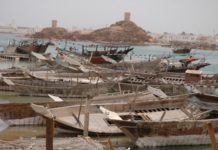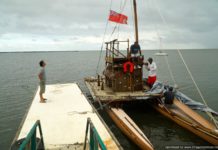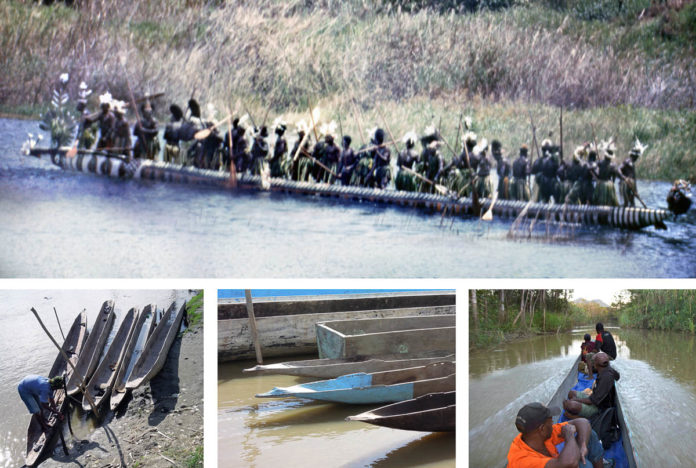
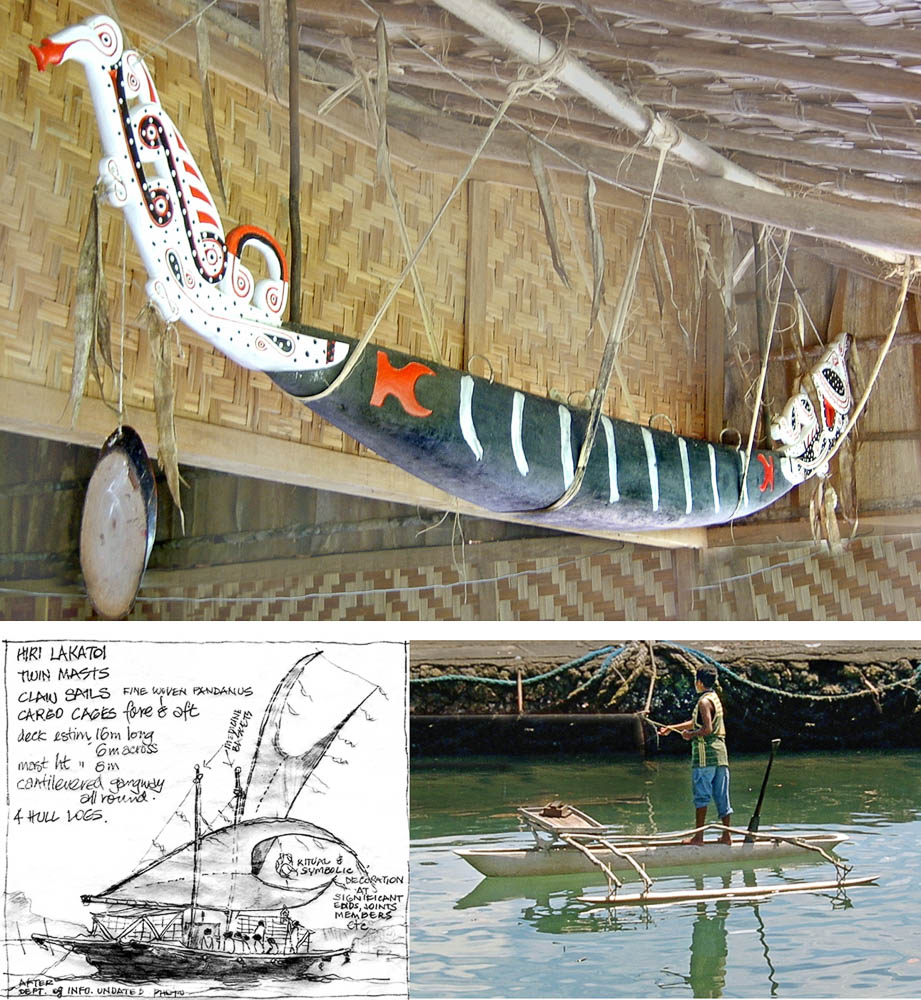
Below : Motu Hiri trading canoe Port Moresby harbour early 20th century. Small personal outrigger Madang 2001.
The PNG range of traditional canoes was large and of various forms. Ocean-going war canoes and long distance sailing vessels for trading, very long passenger canoes for river and lake transport are at one end of the spectrum. Stand-up one person pole or paddle canoes and mini outrigger ones with sails are at the other end. Kiwai trimarans from the Fly River, for example, once sailed to islands far to the west accompanying Indonesian traders. These various canoes and bigger vessels were made from many different materials.
Long single log hardwood (kwila/merbau) canoes, some of which carry over forty passengers, are now outboard powered and are the main means of transport on the mighty Sepik River. Similarly long, but light softwood timber canoes from the Gogodala swamps and Arima River are now famous as racing canoes. They regularly compete in events like the annual Kundu & Kenu Festival. Massim and other regional canoe makers host the event on Milne Bay.
Motuans from the Port Moresby coast had twin-hulled sailing watercraft (lakatois) for the long distance Hiri voyages. Pottery was taken up to Papuan Gulf village trading partners, and sago and logs were brought back in return. The Kula trading ring of the Massim cultural groups involved seasonal ocean going trading voyages between islands off the southeastern tip of the main island of New Guinea. They used elaborately decorated, robust and light outrigger canoes. Both these groups and the Mailu who traded between them invested much in the making of the crafts and the symbolism that was embedded in their decoration and in the ritual preparations for these risky ventures.
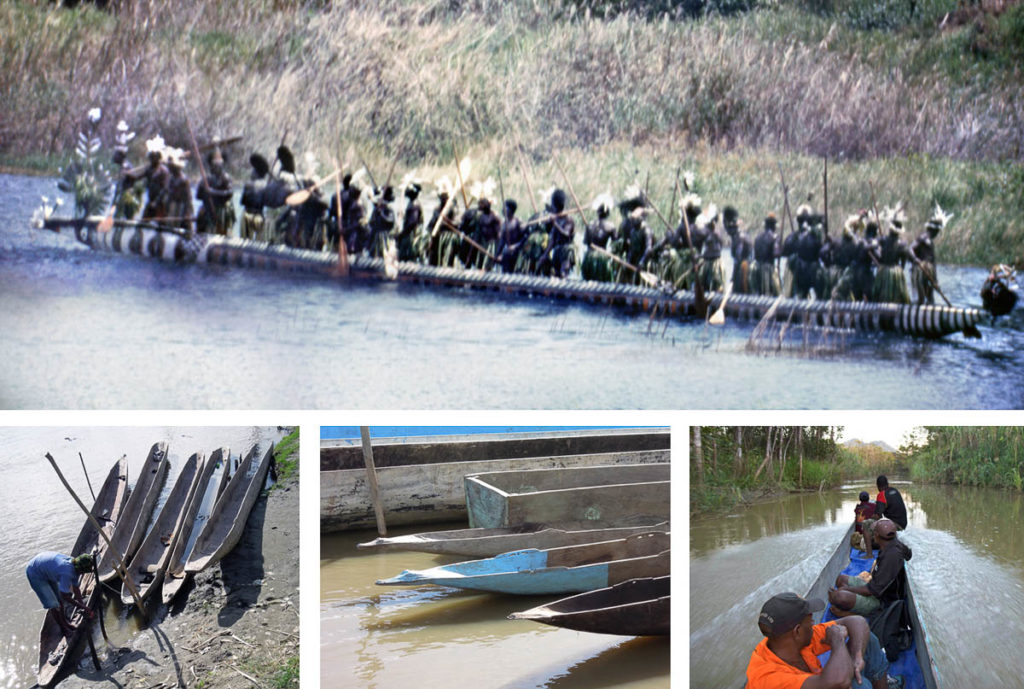
Bottom : Sepik River canoes :
Traditionally in Melanesia canoes were made from selected tree trunks using adzes. For big dugout canoes, judicious use of fire firstly burned out a space within the hulls, which could then be trimmed carefully with adzes. The forms and decoration displayed cultural identity and historic skills of making and of sailing.
Small personal canoes get used daily by men, women and children for mundane purposes. Ones with outriggers and woven palm frond sails had their parts connected and strung with ropes made from various plant fibres. Now, modern ropes and fabric get used when they can be obtained. The skills developed were, and still are, quite specialised and in some cases complex and elaborate. Over time the forms and means of propulsion evolve, hybrid forms emerge and new skills are learned and adapted to suit.


